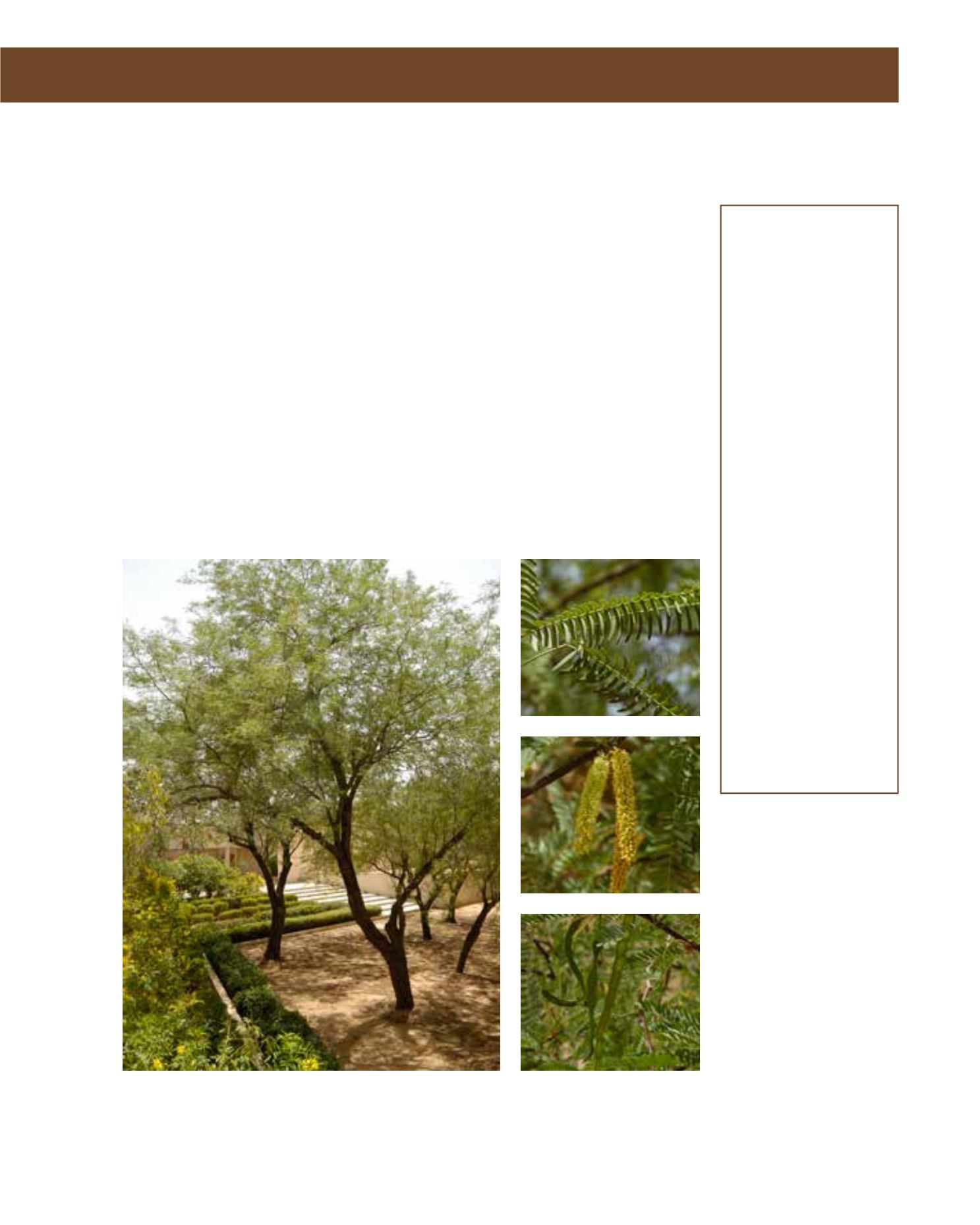

GENERAL
Origin
:
Mediterranean,
sub-tropical
Vigour
:
fairly fast
growing
Humidity
:
extremely arid,
very arid, semi-
arid, semi-humid,
very humid
Propagation :
sowing and
pricking out,
cuttings
Maintenance :
moderate
CONDITIONS
Urban climate :
resistant
Dessication :
resistant
Stagnant water :
vulnerable
Irrigation
:
low
Salinity/ppm :
very high (9000
ppm)
Hardiness
:
-9°C
SHAPE
Type
:
tree
Height
:
7 m-10 m
Spread
:
9 m-12 m
Foliage
:
semi-evergreen
FLOWER
Colour
:
light yellow
Size
:
6 cm - 8 cm
Period
:
April - June
FRUIT
Type of fruit :
pod
Fruit size
:
12 cm - 15 cm
Toxicity
:
edible when
processed
The Chilean Mesquite is a medium-sized tree, native to Chile, where it grows under extreme con-
ditions, and for this reason it is also suitable for planting in Arriyadh, although it is not nearly
as often seen as its relative, P. juliflora. Symmetrical, fast growing to 9 metres high and an equal
spread, it has an open crown, is more upright than juliflora and has bright-green, fine-textured
foliage with widely spaced leaflets. The twisted trunk has smooth bark when young, becoming
darker and rough with age; some young specimens have very large white thorns. The flowers are
moderately showy, cream- to yellow-coloured. Catkin flowers bloom in spring or early summer,
followed by slightly curved pods 12 cm long. Trees require full sun, and reflected heat; they are
frost-resistant, but will lose leaves with sharp cold and keep leaves in warmer winters. This species
can grow in most extreme conditions such as saline soils and drought; little to no supplemental
water after establishment, but occasional deep irrigation, will improve its appearance. It adapts
to most soils with good drainage. Propagation is by seed or cuttings. Maintenance requirements
are high owing to pod, flower and leaf litter, and pruning to remove crossing and sprouting lower,
thorny branches. P. chilensis is a good choice as a shady tree for a garden or natural landscape. P.
cineraria, almost native to the edge of the Ruba Al-Khali and Oman, is a further Prosopis species
which could have potential for use in Arriyadh.
246
Prosopis chilensis,
Mimosaceae
Algarrobo Mesquite,
Chilean Mesquite
















